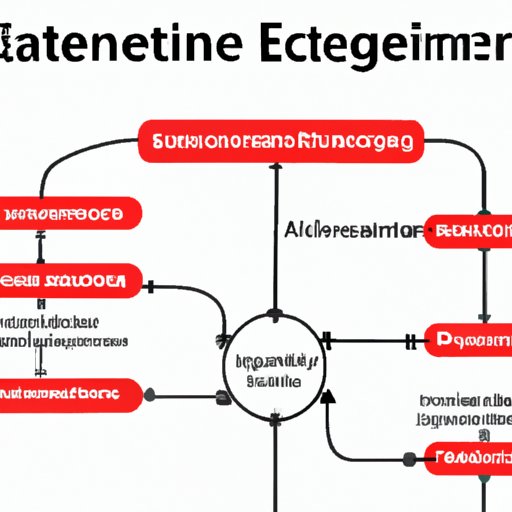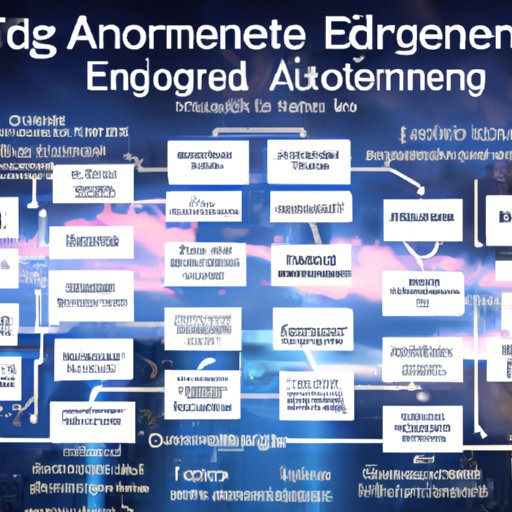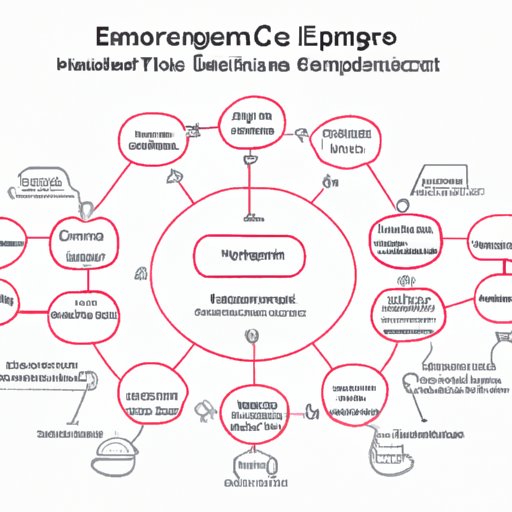Introduction
Enterprise architecture is a holistic approach to designing an organization’s information systems. It is a set of strategies that are used to ensure that the organization’s data, applications, and infrastructure are aligned with its long-term goals. In essence, enterprise architecture is a framework for creating and managing technology solutions that will support the organization’s needs.
Definition of Enterprise Architecture
According to Gartner, “Enterprise architecture is the organizing logic for business processes and IT infrastructure reflecting the integration and standardization requirements of the firm’s operating model.” In other words, enterprise architecture is a strategic framework that helps organizations align their technology investments with their overall business objectives. It is a blueprint for how an organization designs, implements, and maintains its IT environment.
Overview of Enterprise Architecture
The purpose of enterprise architecture is to ensure that the organization’s technology investments are aligned with its current and future goals. By doing so, it helps organizations optimize their cost structure, improve efficiency, and increase agility. It also helps them prepare for future challenges and trends, such as digital transformation.

Exploring the Fundamentals of Enterprise Architecture
In order to understand enterprise architecture, it is important to explore its fundamentals. This includes examining the components of enterprise architecture, the types of enterprise architecture, and the different perspectives of enterprise architecture.
Components of Enterprise Architecture
The components of enterprise architecture include the following:
- Business strategy and goals
- Information architecture
- Application architecture
- Data architecture
- Technology architecture
- Security architecture
- Infrastructure architecture
Types of Enterprise Architecture
There are three main types of enterprise architecture:
- Strategic enterprise architecture – This type of architecture focuses on the big picture and looks at how the organization’s technology investments align with its overall business strategy.
- Tactical enterprise architecture – This type of architecture focuses on short-term goals and looks at how the organization’s technology investments can help it achieve those goals.
- Operational enterprise architecture – This type of architecture focuses on day-to-day operations and looks at how the organization’s technology investments can help it optimize its processes.
Different Perspectives of Enterprise Architecture
There are three main perspectives of enterprise architecture:
- Business perspective – This perspective focuses on the organization’s business objectives and how its technology investments can help it achieve those objectives.
- Technology perspective – This perspective focuses on the organization’s technology investments and how they can be leveraged to meet its business objectives.
- Organizational perspective – This perspective focuses on the organization’s structure and how its technology investments can help it optimize its processes.

A Guide to Understanding Enterprise Architecture
In order to effectively implement enterprise architecture, organizations must first understand the fundamentals of the process. This includes identifying business requirements, developing an enterprise architecture framework, and establishing governance and design principles.
Identifying Business Requirements
The first step in the enterprise architecture process is to identify the organization’s business requirements. This involves analyzing the organization’s current state, understanding its long-term goals, and identifying the technology investments that will be necessary to meet those goals. Once these requirements have been identified, the organization can then begin to develop an enterprise architecture framework.
Developing an Enterprise Architecture Framework
The next step in the process is to develop an enterprise architecture framework. This framework should include the components of enterprise architecture, such as the business strategy and goals, information architecture, application architecture, data architecture, technology architecture, security architecture, and infrastructure architecture. The framework should also define the roles and responsibilities of each component and how they fit together.
Establishing Governance and Design Principles
Once the enterprise architecture framework has been developed, the organization must then establish governance and design principles. These principles should specify how the organization will manage its technology investments and how it will ensure that those investments are aligned with its business objectives. Additionally, the principles should define how the organization will monitor and measure the success of its technology investments.
The Benefits of Implementing an Enterprise Architecture
Implementing an enterprise architecture can provide numerous benefits to an organization. These benefits include improved efficiency and cost savings, increased agility and flexibility, and enhanced visibility and control.
Improved Efficiency and Cost Savings
One of the primary benefits of implementing an enterprise architecture is improved efficiency and cost savings. By aligning the organization’s technology investments with its business objectives, the organization can reduce redundant or unnecessary investments and optimize its cost structure. According to a study by Forrester Research, “Organizations that use enterprise architecture frameworks typically experience up to 25% cost savings due to improved decision making and more efficient use of resources.”
Increased Agility and Flexibility
Another benefit of enterprise architecture is increased agility and flexibility. By having a clear understanding of the organization’s technology investments, the organization can quickly adapt to changing market conditions and customer demands. Additionally, enterprise architecture can help organizations reduce time to market and develop new products and services faster.
Enhanced Visibility and Control
Finally, enterprise architecture can provide enhanced visibility and control over the organization’s technology investments. By having a clear view of the organization’s IT environment, the organization can better manage its investments and ensure that they are aligned with its long-term goals. Additionally, enterprise architecture can help organizations identify areas of improvement and potential risks.
How Enterprise Architecture Can Streamline Business Processes
In addition to the benefits listed above, enterprise architecture can also help organizations streamline their business processes. This includes optimizing data management, automating business processes, and enhancing collaboration.
Optimizing Data Management
By leveraging enterprise architecture, organizations can optimize their data management processes. This includes ensuring that the organization’s data is organized and easily accessible, as well as ensuring that the organization’s data is secure and compliant with industry regulations. Additionally, enterprise architecture can help organizations identify areas where they can improve their data management processes.
Automating Business Processes
Additionally, enterprise architecture can help organizations automate their business processes. By leveraging enterprise architecture, organizations can identify areas where automation can be implemented, as well as develop automated processes that are aligned with the organization’s business objectives. Automation can help organizations improve efficiency and reduce costs, as well as eliminate manual errors.
Enhancing Collaboration
Finally, enterprise architecture can help organizations enhance collaboration. By having a clear understanding of the organization’s technology investments, the organization can better facilitate communication between departments and teams. Additionally, enterprise architecture can help organizations develop collaborative tools and processes that are aligned with the organization’s business objectives.

The Role of Enterprise Architecture in Digital Transformation
In today’s digital world, enterprise architecture plays an important role in helping organizations successfully navigate digital transformation. By leveraging enterprise architecture, organizations can leverage technology to create a competitive edge, enhance security and compliance, and prepare for future challenges.
Leveraging Technology to Create a Competitive Edge
One of the key benefits of enterprise architecture is that it can help organizations leverage technology to create a competitive edge. By understanding the organization’s technology investments and how they can be leveraged to meet its business objectives, the organization can develop innovative solutions and stay ahead of the competition.
Enhancing Security and Compliance
Additionally, enterprise architecture can help organizations enhance their security and compliance posture. By having a clear understanding of the organization’s IT environment, the organization can identify potential risks and ensure that its technology investments are compliant with industry regulations.
Preparing for Future Challenges
Finally, enterprise architecture can help organizations prepare for future challenges. By understanding the organization’s current state and long-term goals, the organization can develop a roadmap for the future that will enable it to remain competitive and successful.
Conclusion
In conclusion, enterprise architecture is a powerful tool that can help organizations optimize their cost structure, improve efficiency, and increase agility. It can also help organizations streamline their business processes, leverage technology to create a competitive edge, enhance security and compliance, and prepare for future challenges. By understanding the fundamentals of enterprise architecture, organizations can successfully implement enterprise architecture and realize its many benefits.
(Note: Is this article not meeting your expectations? Do you have knowledge or insights to share? Unlock new opportunities and expand your reach by joining our authors team. Click Registration to join us and share your expertise with our readers.)
